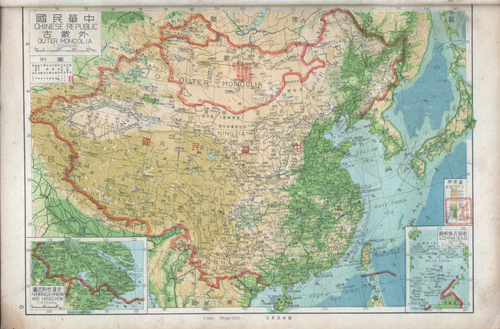This analogy is useful but doesn’t tell the full story. When it comes to geography, CJKV has a much more ingrained habit of affixing a descriptive word than many Indo-European languages. In English, you can informally refer to the River Thames as just “the Thames” or indeed any river as “the [Base Name] River”, as long as your audience can tolerate some ambiguity. Similarly, you can usually clip the name of a street without sounding stilted: “Take the M3 motorway to the A303 road and come off at Solstice Park Avenue.”
By contrast, in CJK, the notion of a “base name” is less useful, at least in prose or speech. Dropping the analogous words or characters from a Chinese sentence would be not only informal but probably also ungrammatical (correct me if I’m wrong). If you drop the 州 from 肯德基州, it refers to Kentucky Fried Chicken rather than the State of Kentucky. The components of an address are smooshed right up next to each other, as in “福建省福州市连江县丹阳镇新洋村团结路10号”, so if you drop any of those type words, a human may be unable to comprehend the rest of the address or the phrase it’s in.
Even so, these affixes don’t necessarily make their way onto maps and signs, which must economize on space. Across many cultures, maps have traditionally omitted “boring” words from name labels. A map may omit “road” or “street”, “railroad”, “province”, “river”, and so on – and so might a sign, without affecting how people refer to the feature in speech.

File:1947 Zhonghua Minguo Quantu.png
Vietnamese is not quite as strict as CJK. Due to a different grammar and writing system, the tỉnh in Tỉnh Quảng Ngãi is optional in more contexts, but when you want to refer to the commune of Bình Mỹ in the district of Bình Sơn in the province of Quảng Ngãi, as opposed to some other Bình Mỹ, you’d still tend to say “xã Bình Mỹ, huyện Bình Sơn, tỉnh Quảng Ngãi”. So that information does need to be stored somewhere, if not in name=* then perhaps in border_type=*. We could remove Tỉnh from the names of these administrative boundary relations, but Thành phố Hồ Chí Minh can’t be shortened to just Hồ Chí Minh without becoming very awkward.
Similarly, mappers with Kaart and HOT have disagreed about whether to include or omit đường in street names, since only boulevards and expressways would begin with a different word. Đường always appears on the sign, but it’s more like a classifier or title than a part of the name proper. Vietnamese often likes to introduce a proper noun or loanword by some more general word, so “pizza” gets translated as bánh pizza (literally “pizza cake”) and “OSM” might become trang OSM (“the OSM site”). The boring words in these features’ names are basically the same thing.
In English-speaking regions, we consistently include boring words in name=* tags, especially for roads and streets. This is partly because the boring words aren’t especially predictable: the U.S. has hundreds of “common” street name suffixes, and other regions have their own. A tagging scheme for these “types” would be tantamount to splitting name=* into more structured fields. Long ago, one mapper in my area experimented with shortest_name=* for the base name, but unfortunately this idea never took off.